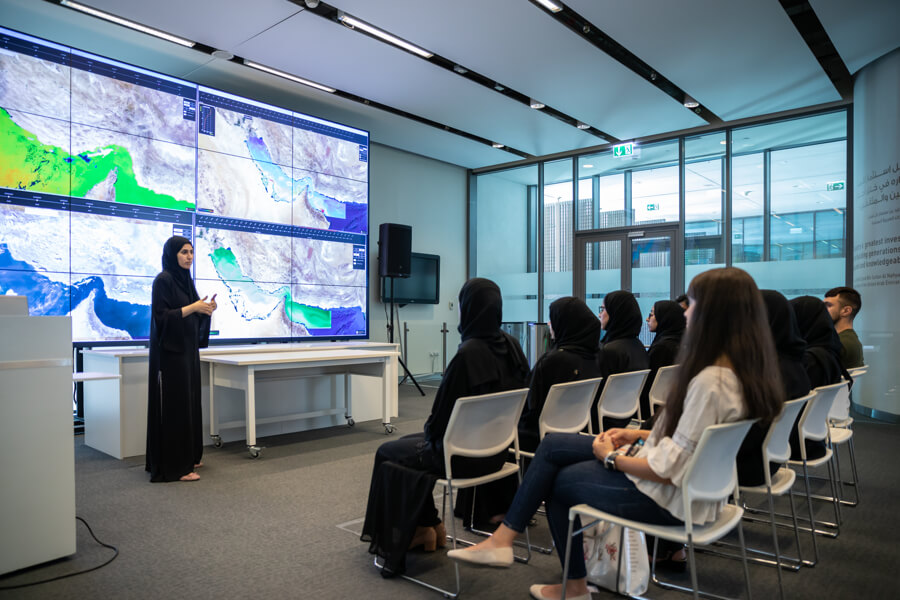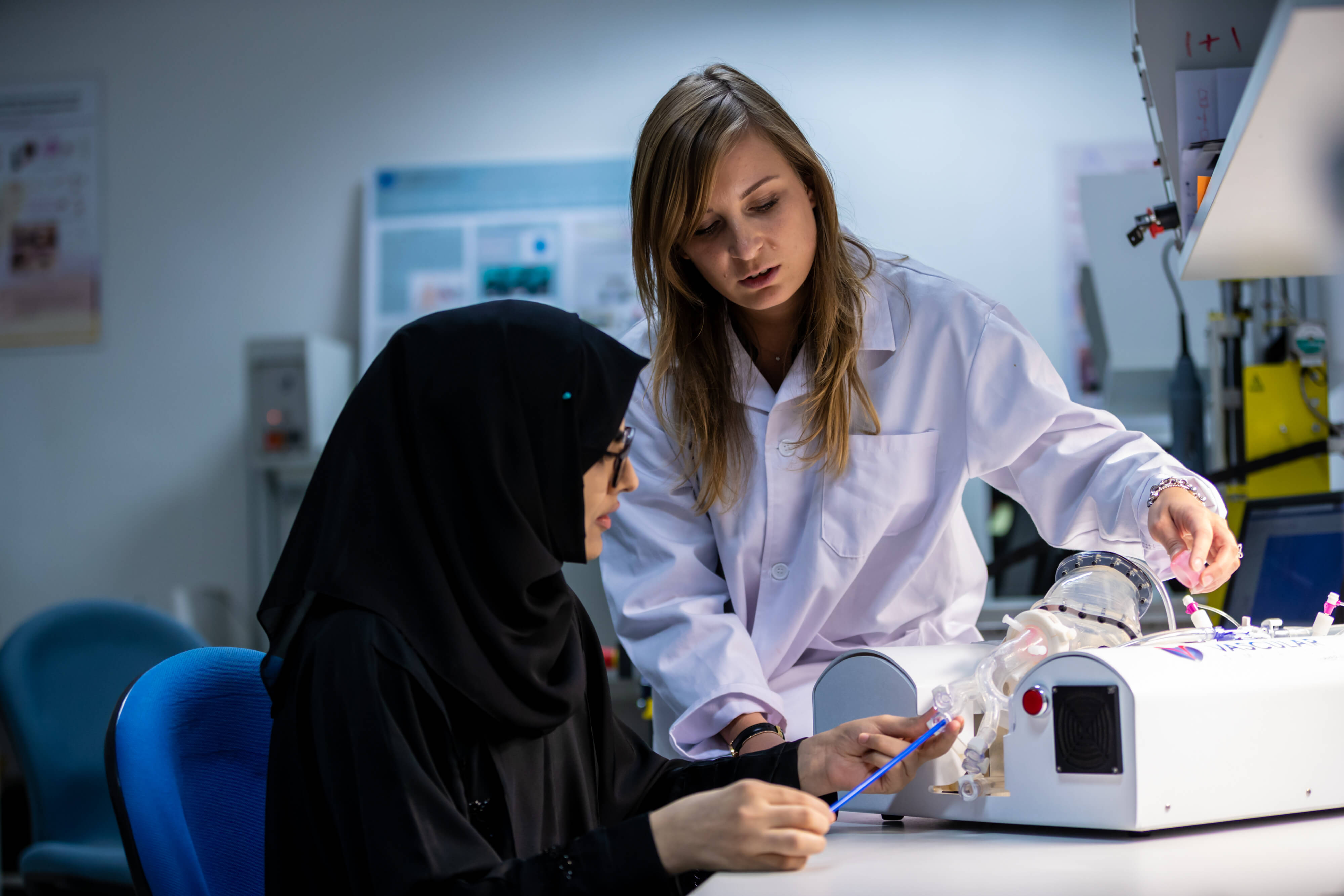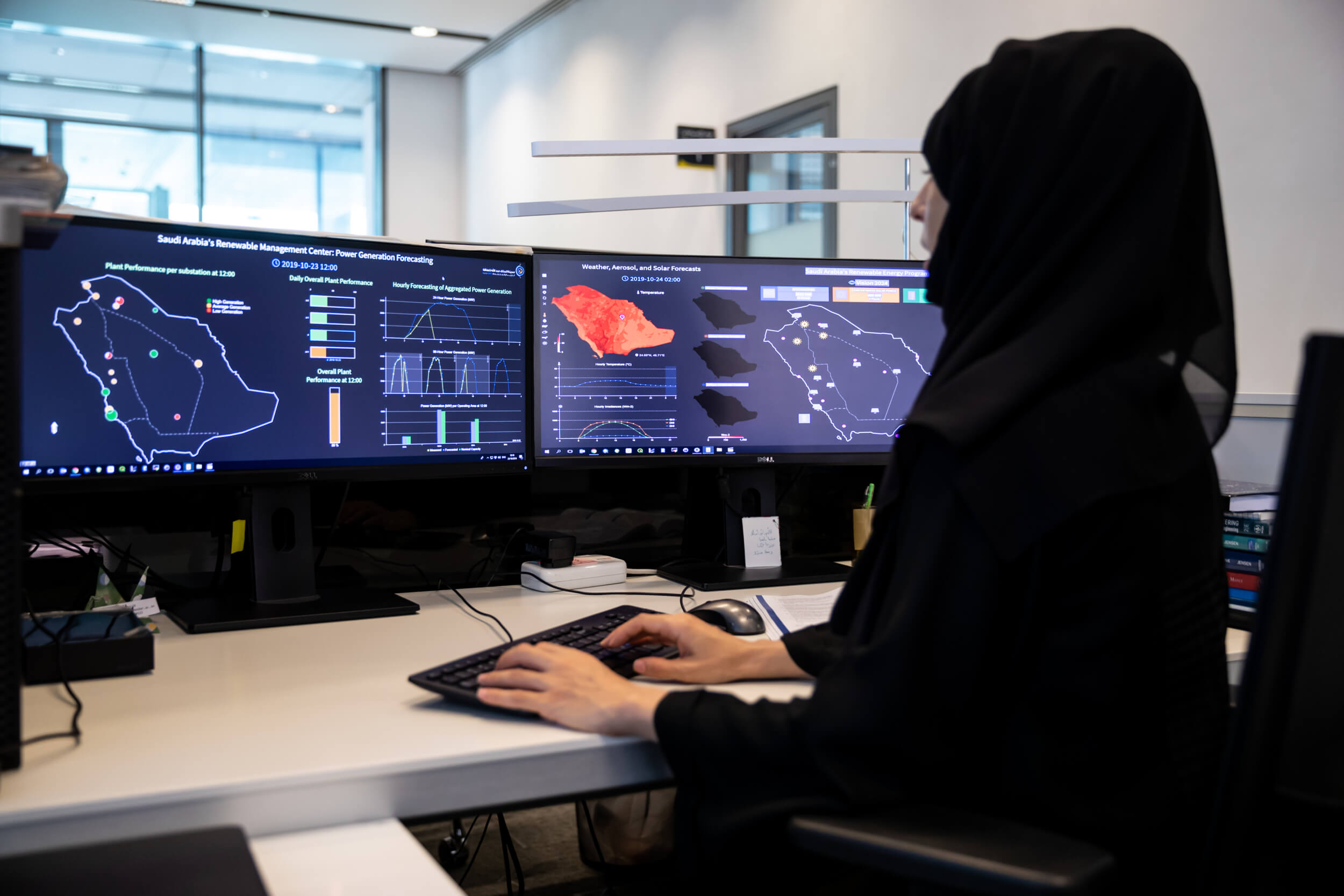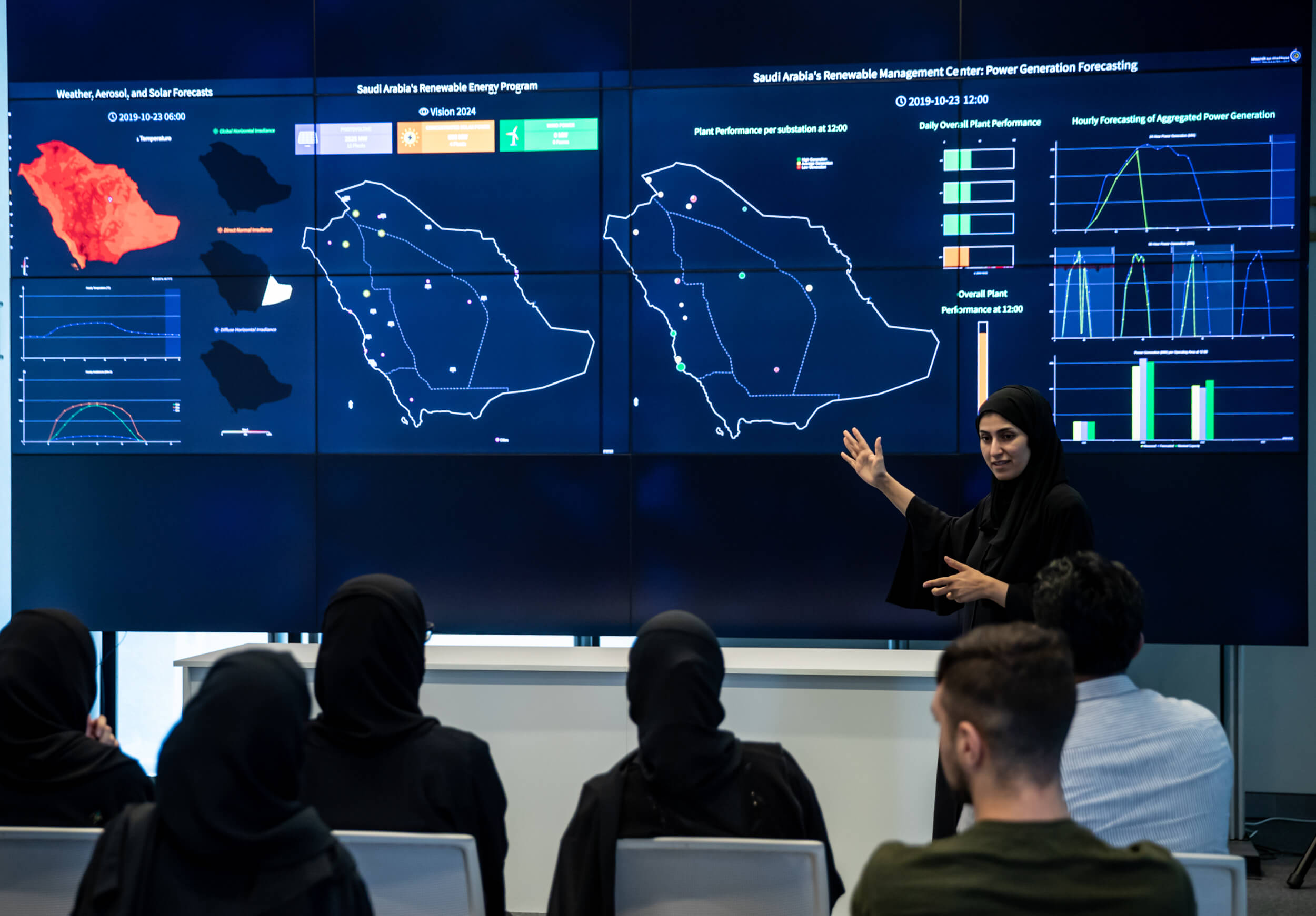A collaborative project between Masdar Institute (MI) and the Massachusetts Institute of Technology (MIT) has become the first MI project featured in one of the world’s leading scientific journals, Nature.
Nature is the world’s most highly cited interdisciplinary scientific journal. The featured project made the front cover of the current Nature issue and explores the development of an innovative, low-cost method for fabricating a range of highly efficient semiconducting materials. The research is part of a Masdar Institute collaboration with MIT and is led by Dr. Ibraheem Almansouri, Assistant Professor of Electrical Engineering and Computer Science, at MI and Dr. Jeehwan Kim, Assistant Professor of Mechanical Engineering, at MIT.
“We are proud of Dr. Almansouri and MIT principal investigator Dr. Kim for having their work published in such a prestigious scientific publication. Having a collaborative project published in Nature reflects the quality of the research being undertaken at the Institute and the strength of our collaboration with MIT. MI aims to advance science and engineering in key sectors of relevance to the UAE and this work is evidence of progress toward that objective,” said Dr. Steve Griffiths, Vice President for Research.
The paper, titled “Remote epitaxy through graphene enables two-dimensional material based layer transfer,” describes a breakthrough method for fabricating different III-V compound semiconductors, including gallium arsenide (GaAs), gallium phosphide (GaP) and indium phosphide (InP) in a low-cost way using graphene, which could make the expensive but highly efficient semiconducting materials more cost-competitive with silicon.
The research has the potential to significantly advance a number of important fields, including solar photovoltaics, microelectronics and optoelectronics. As a result, it responds directly to the objectives of UAE’s National Innovation Strategy, which calls for innovation across seven key economic sectors, including energy and technology.
Silicon is the most widely used semiconductor in solar cells, computer chips and other electronic devices because it is extremely cheap to make. However, III-V materials (so-named because they involve combining elements from group III of the periodic table with elements from group V) have clear efficiency advantages over silicon, which makes III-V semiconductor-based electronics faster, enabling greater computing power. Additionally, III-V semiconductor-based solar cells can convert sunlight to electricity at different wavelengths than silicon, thus enabling much more efficient solar cells.
But since silicon-based solar cells are much cheaper to make, solar cells that use III-V semiconductor-materials have been relegated to niche applications like satellites and other specialized uses where high cost is less important than high efficiency with minimal size and weight. At the present time, solar cells using III-V semiconducting materials can cost 30 to 200 times as much as cells made just from silicon.
“Once it becomes possible to make III-V semiconductors more cost-effectively, other people will jump in to improve other parts of the process. And with each advance, more uses will open up, especially in solar energy generation where the III-V solar cell has clear efficiency advantages, and in wearable electronics where cheap III-V based computers and sensors are used for the internet-of-things (IoT),” said Dr. Kim.
Dr. Almansouri believes the new process his team developed could make III-V compound semiconductors more practical and affordable for terrestrial-based applications, like solar cells, photodetectors and other microelectronic and optoelectronic devices, with the advantage of lightweight installation.
Dr. Almansouri and Dr. Kim’s technique grows a thin film of III-V semiconducting materials on top of a semiconductor wafer of the same material with a graphene buffer sandwiched in between. With the addition of a graphene layer on the wafer, the team essentially created a copy machine that allows new layers of III-V semiconductors to grow and be easily peeled off, keeping the substrate in tact and ready for re-use.
“The biggest challenge to all existing layer transfer methods necessary for substrate reuse technique is peeling off the newly grown top layer, while leaving the substrate – which is the most expensive component – intact. Conventional substrate removal strategies can cause damage to the substrate. This means either an entirely new substrate is required or the substrate will need to undergo mechanical polishing in order to reuse it, further increasing the costs,” Dr. Almansouri explained.
The Masdar Institute-MIT technique, called ‘remote epitaxy,’ expands on the scientific discovery made by Dr. Kim when he joined MIT. The new technique described in the team’s Nature paper optimizes Dr. Kim’s process to expand the concept for many different III-V semiconductors and increase the speed of layer transfer.
This research is being conducted as part of a one-to-one joint collaborative research project between Masdar Institute and MIT, titled “Fabrication of High Efficiency III-V on Si Photovoltaic Cells Using Advanced Layer Transfer.”
Erica Solomon
News and Features Writer
1 May 2017






